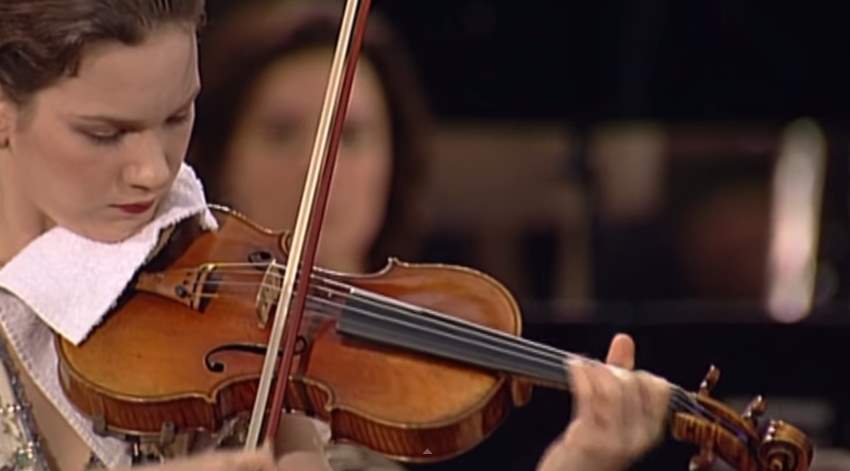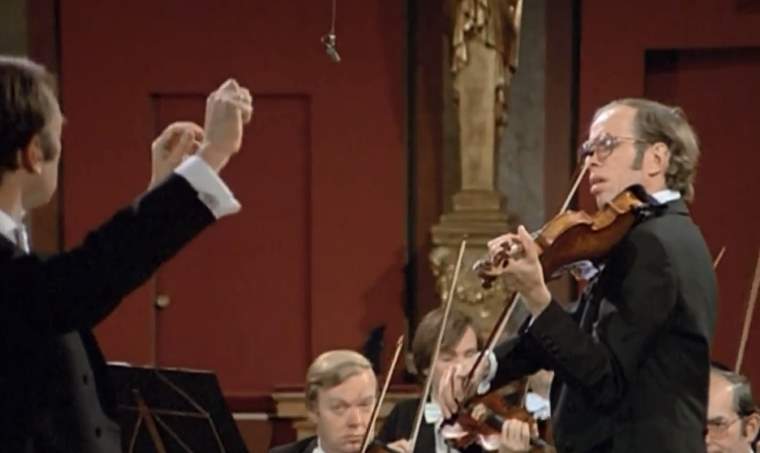Accompanied by the Camerata Salzburg, German violinist Anne-Sophie Mutter performs Wolfgang Amadeus Mozart’s Violin Concerto No. 5 in A major, K. 219 (often referred to by the nickname The Turkish). Anne-Sophie Mutter also conducts the orchestra.
After returning from Italy on 13 March 1773, Mozart Mozart was employed as a court musician by the ruler of Salzburg. Between April and December 1775, Mozart developed an enthusiasm for violin concertos, producing a series of five (the only ones he ever wrote). The fifth violin concerto was composed in 1975 and premiering during the holiday season that year in Salzburg.
The concerto is scored for two oboes, two horns, and strings. There are three movements:
- Allegro aperto – Adagio – Allegro aperto The aperto marking on the first movement is rare in Mozart’s instrumental music (two of his piano concerti, Piano Concerto No. 6 in B-flat Major and Piano Concerto No. 8 in C Major, have this marking, as does his Oboe Concerto in C Major are two other examples), but appears much more frequently in his operas. It implies that the piece should be played in a broader, more majestic way than might be indicated simply by allegro. The first movement opens with the orchestra playing the main theme, a typical Mozartian tune. The solo violin comes in with a short but sweet dolce adagio passage in A Major with a simple accompaniment by the orchestra. (This is the only instance in Mozart’s concerto repertoire in which an adagio interlude of this sort occurs at the first soloist entry of the concerto.) It then transitions back to the main theme with the solo violin playing a different melody on top of the orchestra
- Adagio (E major) The Adagio, in E major, is a three-part song form of a lyrical and contemplative nature
- Rondeau – Tempo di minuetto The rondo Finale is based on a Minuet theme which recurs several times. In the middle of the movement the meter changes from 3/4 to 2/4 and a section of “Turkish music” is played. This is characterized by the shift to A minor (from the original A major), and by the use of grotesque elements, such as unison chromatic crescendos, repetition of very short musical elements and col legno playing in the cellos and double basses. This section gave the concerto the nickname “The Turkish Concerto”. The famous Rondo alla Turca from Mozart’s Piano Sonata No. 11 in A major features the same key and similar elements.
Sources
- Violin Concerto No. 5 (Mozart) on wikipedia

